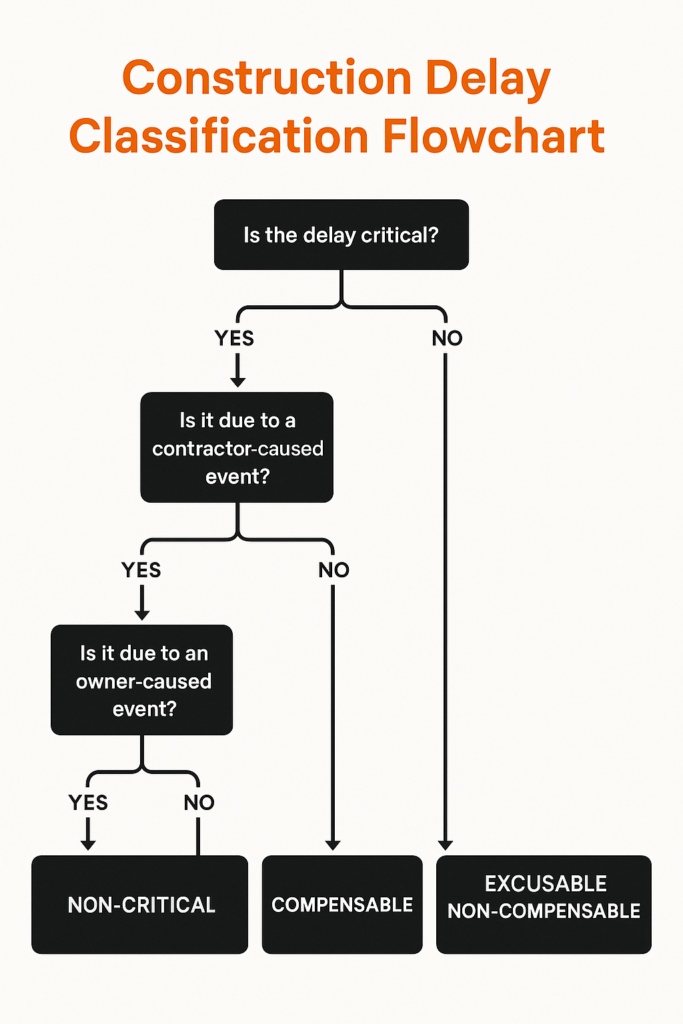In short:
- A construction delay notice is a formal document that protects your contractual rights by clearly communicating delays to the client.
- It should explain the root cause of the delay, specify which activities are affected, estimate the time impact, and cite relevant clauses in the contract.
- Submitting the notice promptly and in a professional format helps prevent disputes, avoids penalties, and increases the likelihood of your claim being accepted.
Writing a Notice of Delay Construction can be a challenge, especially when you’re unsure how to format it. Failing to submit a proper notice on time might result in disputes, penalties, or even damaged relationships with clients and contractors.
This uncertainty only grows when you consider the complex legal and contractual language required, leaving you wondering if your notice will hold up in case of a claim. With so many details to manage, from outlining the cause of the delay to providing mitigation strategies, it’s easy to feel overwhelmed.
But don’t worry. In this guide, we’ll break down exactly how to structure your notice to cover all the necessary points, ensuring smooth communication and protection for all parties involved.
Trusted by Top Construction Firms
Discover how leading construction firms like Dar Al Handasah track progress in real-time, detect delays early, and keep schedules under control with Opteam.

Types of Delays in Construction
1. Was the Delay Critical?
Critical delays directly impact the project’s completion date or a key milestone because they affect the critical path. These delays cannot be recovered or “made up,” leading to a necessary extension of the project schedule. On the other hand, noncritical delays impact specific activities but do not postpone the overall project completion.
2. Could the Delay Have Been Avoided?
Delays are categorized as either excusable or inexcusable based on whether they were within the contractor’s control.
- Excusable Delays are caused by factors outside the contractor’s control, such as weather or unforeseeable events. Contracts often specify that these types of delays justify extending the project schedule.
- Inexcusable Delays occur due to actions or negligence on the contractor’s part, such as poor planning or resource mismanagement. These do not usually warrant an extension or compensation.
3. Should the Contractor Be Paid for the Delay?
Delays are also classified based on whether the contractor is entitled to compensation.
- Compensable Delays are excusable delays that are out of the contractor’s control, justifying not only a time extension but also compensation for added costs.
- Non-compensable Delays are generally inexcusable, meaning the contractor is responsible for them and will not receive any additional compensation or time extension for their resolution.
🧭 Not All Delays Are Equal: Know Which One You’re Facing
Before you send that notice — make sure you’re classifying the delay correctly.
Use the flowchart below to quickly identify whether your delay is:
- Excusable vs. Inexcusable
- Compensable vs. Non-compensable
- Critical vs. Non-critical

Important Information to Include in a Construction Notice of Delay
1. Project Details
Start by clearly identifying the project. Include the project name, contract number, and location. This ensures that all parties know exactly which construction site is being referred to, avoiding any potential confusion.
2. Reason for the Delay
Provide a detailed explanation of what caused the delay. Whether it’s due to weather, supply chain issues, or other unforeseen circumstances, it’s important to describe the situation thoroughly. This is crucial in showing that the delay was beyond your control.
3. Impact on the Schedule
Explain how the delay is affecting the construction timeline. Include specifics such as the tasks being delayed, the anticipated duration of the delay, and any critical milestones that will be affected. This helps the recipient understand the full scope of the impact.
4. Mitigation Efforts
Describe any steps being taken to minimize the delay or its consequences. Whether you’re reallocating resources or revising the schedule, outlining these efforts shows your commitment to keeping the project on track as much as possible.
5. Revised Completion Date
Provide an updated estimate of the project’s completion date, taking the delay into account. If you cannot give a specific date, provide an expected range. This allows the recipient to adjust their expectations and plan accordingly.
6. Request for Time Extension (if applicable)
If the delay warrants a formal request for a time extension, include this in your notice. Be clear about how much additional time is needed and why it’s necessary based on the cause and severity of the delay.
7. References to Contract Clauses
Reference any relevant contract clauses that pertain to delays or time extensions. This strengthens your case by showing that your notice is in line with contractual obligations and PAS standards.
8. Contact Information
Ensure you provide clear contact details for follow-up discussions. This promotes transparency and allows for quick communication to resolve any issues arising from the delay.
Trusted by Top Construction Firms
Discover how leading construction firms like Dar Al Handasah track progress in real-time, detect delays early, and keep schedules under control with Opteam.

Professional Examples: Notice of Delay Construction
1. Weather-Related Delay Notice
Subject: Notice of Delay Due to Severe Weather Conditions
Date: [Insert Date]
Project: [Project Name], Contract No. [Contract Number]
Dear [Recipient’s Name],
We are writing to formally notify you of a delay affecting the above-referenced project due to severe weather conditions. On [specific dates], heavy rainfall and extreme winds occurred, making it unsafe to proceed with the scheduled construction activities. These conditions have resulted in a critical delay to the following tasks: [list of tasks affected].
As this delay was caused by circumstances beyond our control, we kindly request a time extension of [number of days] as provided under Clause [contract clause reference] of the contract. We are actively taking steps to mitigate the impact and will continue to monitor the situation closely.
Thank you for your understanding. Please do not hesitate to contact us for further details.
Sincerely,
[Your Name]
[Your Position]
[Company Name]
2. Material Shortage Delay Notice
Subject: Notice of Delay Due to Material Shortage
Date: [Insert Date]
Project: [Project Name], Contract No. [Contract Number]
Dear [Recipient’s Name],
We regret to inform you that we are experiencing a delay in the project due to an unforeseen shortage of essential materials required for [specific task or phase]. Our supplier has informed us that [cause of shortage, e.g., shipping delays] has impacted their ability to deliver on time.
As a result, the tasks related to [specific activities] are delayed, which in turn affects the critical path of the project. We anticipate a delay of [number of days] and request an extension of the project completion date under Clause [contract clause reference].
We are actively seeking alternative suppliers to mitigate the delay and minimize any further disruption. We will provide updates as soon as new information becomes available.
Thank you for your understanding and cooperation.
Sincerely,
[Your Name]
[Your Position]
[Company Name]
3. Contractor-Caused Delay Notice
Subject: Notice of Delay Due to Internal Issues
Date: [Insert Date]
Project: [Project Name], Contract No. [Contract Number]
Dear [Recipient’s Name],
We regret to notify you that the project has encountered delays caused by internal issues related to [specific cause, e.g., equipment failure, staffing shortages]. We acknowledge that these delays are inexcusable under the terms of the contract, and we are taking immediate corrective actions to address the situation.
While this delay does not affect the critical path of the project, specific activities related to [task] will be impacted by approximately [number of days]. We are working diligently to ensure these tasks are completed as soon as possible without requesting a formal extension or additional compensation.
We apologize for any inconvenience this may cause and appreciate your understanding as we work to resolve the matter.
Sincerely,
[Your Name]
[Your Position]
[Company Name]
About Opteam
Avoiding construction delays is all about staying informed and prepared. With a reliable project management system, you can track every phase of your project, identify potential issues before they become critical, and manage resources more efficiently.
Our software allows you to monitor timelines, adjust schedules in real-time, and ensure you’re always ahead of delays—whether caused by weather, material shortages, or internal challenges.
Ready to see how it can make a difference in your projects? Try it free for two weeks and experience streamlined scheduling and better control over your construction timelines!
Read more:


